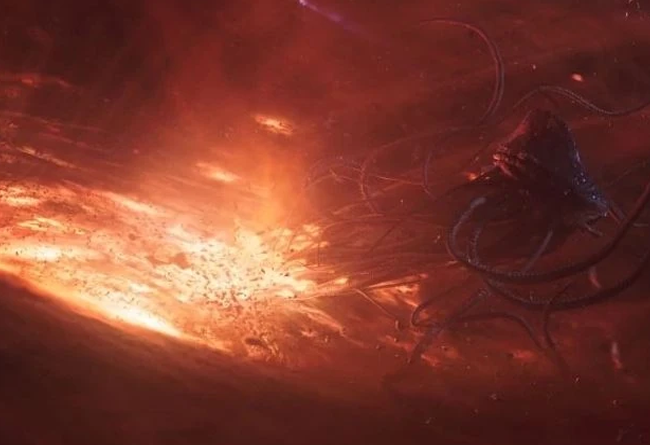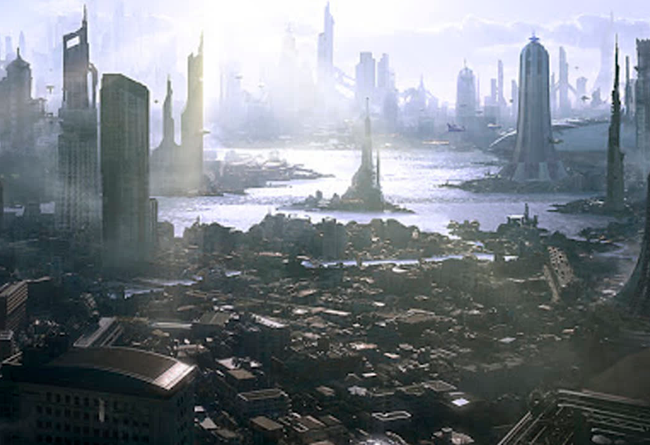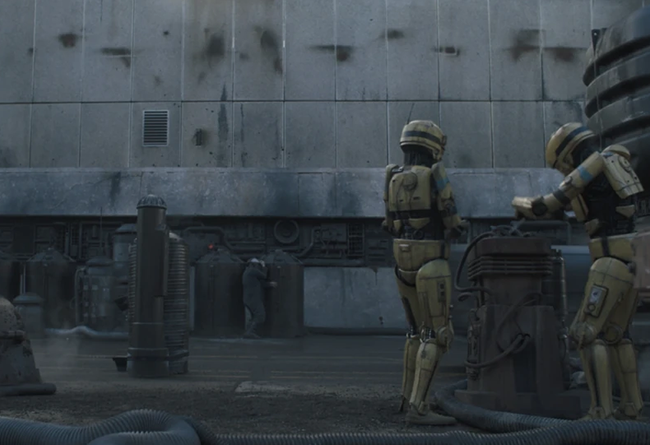Name: Sundari (Capital)
Planet: Mandalore
Status: Destroyed 5 ABY
Starport Type: Imperial
Traffic: Heavy
Control: Local / Imperial
Docking Areas: 50 Capital Ship Docks, numerous hangers
Docking Fee: 150 credits a day
Customs: Local / Imperial
Law Enforcement: Heavy
Services: Fully Serviced
Population: 2 Million
Points of Interest: Almec’s office, Royal Academy of Government/Imperial Academy of Mandalore, Mandalore Banking Center, Peace Park, Royal prison, Sundari Mandalorian hospital, Sundari Mandalorian school, Sundari Royal Palace,
Undercity
Game Note: Sundari was destroyed by Imperial bombardment during the Night of a Thousand Tears in the Imperial campaign against Mandalore that would later be referred to as the Great Purge of Mandalore which occurred between 4 BBY to 5 ABY during the Rebellion.
Background: Sundari was the domed capital city of the planet Mandalore. Nestled within a vast, black-colored dome that protected against the inhospitable desert region of the planet Mandalore in which it was located, Sundari was a large bio-cube city, and the capital city of the New Mandalorian faction. Sundari enclosed one of Mandalore’s largest active mines of beskar iron ore within its outer walls, providing the city with valuable resources and a major strategic asset. It was surrounded by a number of other cube cities, smaller in size than the large black dome, and constructed by the New Mandalorians to survive the harsh conditions of Mandalore’s deserts. On its outer face, Sundari hosted shipping docks for receiving supply shipments to the city, and welcoming visiting starships; automated transports waited to ferry beings from the docks into the city’s interior, and officers of the Mandalorian police force patrolled the area.
Inside Sundari’s black dome, the city was comprised of a complex series of rectangular and often cube-shaped buildings, constructed in close quarters with large blocks of permacrete and beskar iron, with sheets of transparisteel that ranged from translucent to transparent. Its high-technology structures rose up from the ground and hung from the dome’s vaulted ceiling, alike, maximizing the space available. Skylanes filled with airspeeders wove between Sundari’s glass towers, patrolled by police-owned Buirk’alor-class speeders. Near the heart of the city stood the Sundari Royal Palace, home to Sundari’s leaders, and the tranquil Peace Park that housed the Memorial Shrine. Peace Park was one of several places dedicated to the natural greenery Sundari’s external desert surroundings denied its people, ranging from plazas to rooftop gardens, but the city’s vegetation was highly regimented, with everything from shrubbery to trees meticulously tended and trimmed from their natural forms into stark geometric shapes.
Sundari’s most promising youths received an education at the Royal Academy of Government, which prepared them for leadership roles in the New Mandalorian government, while other New Mandalorian children attended a different school within the city. Among Sundari’s financial establishments stood the Mandalore Banking Center, a multistory facility housing wealth-laden vaults. The city boasted its own judiciary courts, and Sundari’s convicted criminals were held in a prison that stretched downward from Sundari’s domed heights. The Sundari Peace Museum housed Mandalorian armor on display. By the year 22 BBY, a new hospital was opened in the city, with facilities to treat hundreds of patients, and an outdoor grounds large enough to accommodate several Aka’jor-class shuttles loaded with individuals in need of medical treatment.
During the early rebellion against the Galactic Empire, Imperial Governor Tiber Saxon had his command ship above Sundari during a civil war.
Sundari was destroyed by Imperial bombardment during the Night of a Thousand Tears in the Imperial campaign against Mandalore that would later be referred to as the Great Purge of Mandalore.





